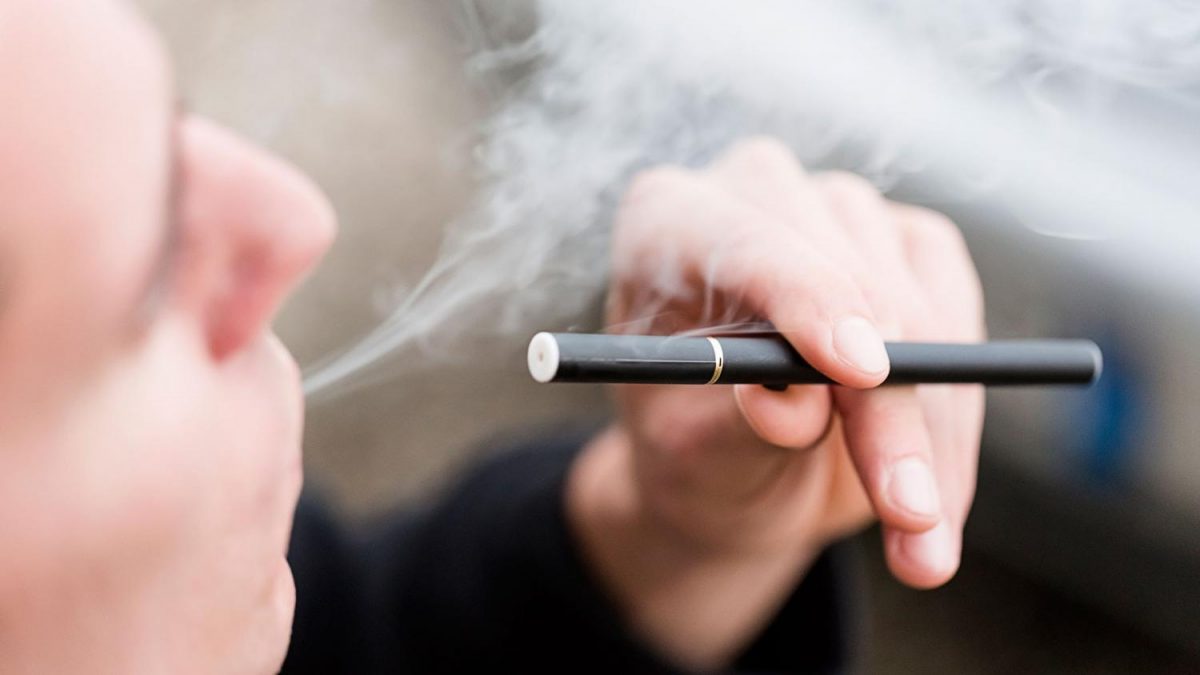Vaping: Better or Worse Than Cigarettes?
November 25, 2017
A new form of drug use and addiction known as vaping is spreading among teens throughout America. Vape pens and e-cigarettes are devices that aim to create the same feeling as smoking a cigarette. They can contain highly addictive substances such as nicotine, marijuana, and nicotine-free “e-liquid.”
E-cigarettes were designed to be a safer alternative to cigarette smoking and to create a vapor that is more undetectable than regular smoke. But how safe is it?
Recent studies reveal how misunderstood vaping really is and the harmful effects it can have on the teenage body. So is vaping worse than cigarettes or is it a safe option? How does vaping coincide with the social and scientific aspects of the climate of our school and community?
The consequences of smoking cigarettes are discussed throughout the Hingham Public School system, starting in the program called Drug Abuse Resistance Education or D.A.R.E which educates students on the dangers of smoking. It seems that, because of this, the use of tobacco has gone down. A study from the Centers for Disease Control and Prevention, or CDC, monitored the youth of America on the use of licit and illicit drugs. It showed that cigarette use has reached its lowest point since 1975.
The absence of cigarettes brought the idea of an alternative, which is vaping. This is relatively new to media and students, making long term clinical effects currently unknown.
“I don’t know much about vaping because I am more educated on the effects of cigarettes. I don’t think we ever actually learned the harms of vaping,” revealed Abby Meissner, a freshmen at Hingham High.
The use of e-cigarettes is not widely talked about in the school system, leading to the assumption that it is a better or a healthier option than smoking cigarettes. That reasoning has led to an increase in the use of e-cigarettes or vape pens among adolescents.
The CDC also published a study that shows an increasing amount of high school students developing addictions to nicotine from vaping. Nicotine has significant health dangers. The amount of high schoolers abusing nicotine has risen from 1.5 percent in 2011 to 16 percent in 2015, according to the CDC statistics. This influx in vaping continues to rise regardless of the evidence showing that nicotine is toxic for developing brain and body systems.
A study from the Center for Tobacco Control Research and Education revealed that e-cigarettes do generally have less nicotine than cigarettes. However, this may not always be a healthy way to wean off cigarette use. Vaping might help an addict quit regular cigarettes, but it can also lead to a more significant addiction to nicotine.
Studies that evaluate whether e-cigarettes are a less harmful version of regular cigarettes are still inconclusive, according to the study in The Journal of Tobacco Control in May 2014. This study also determines that the heart and lung health risks are unknown because the product has only been on the market for about 10 years.
According to the American Lung Association, another unknown risk is how the flavoring used in the devices affects people’s health. More research is needed to conclude how inhaling these flavoring chemicals could be hazardous to the human body.
To better understand why high schoolers vape, students around Hingham High School were asked their opinions on the subject. “I think it’s basically like a power play,” Abby Meisner continued. “If you vape, you’re cool.”
Colleen Keohane, also a freshmen, said, “I think it’s to fit in with the people they hang out with because they also vape.”
Vaping has shown to be spread by peer pressure as well as the “cool” factor. When asked about the reasons why vaping has become a symbol of being cool to freshmen, Margret Asmuss stated,“I think the media glorifies vaping because on instagram, I see people doing cool tricks with it.”
This all goes along with how the media encourages vaping. Cigarettes, however, are not as frequently depicted in social media because of their declining use among teens. E-cigarettes have replaced them in the public eye.
Marketers and the media portray vaping as being a “harmless water vapor.” They fail to mention the effects it has on its users and what can happen when using the product.
Now, to address the question: which is worse, vaping or smoking?
On one hand, it can certainly be concluded that cigarettes are harmful because they have existed long enough for there to be significant evidence demonstrating the dangers of smoking. The risks posed by smoking cigarettes are far more well-known and better researched. The risks of cigarette smoking are also a large part of health education in schools, which has resulted in a decline in cigarette use by the teens of America.
On the other hand, much less is known about vaping. But what is know is that it is a drug that can negatively affect teen health, even if it is not as severe as cigarettes. It is also often advertised in social media as being acceptable and even “cool,” so the risks of vaping are far more pressing when it comes to high schoolers.
The conclusion is that due to the loss of interest in cigarettes, vaping is becoming a more serious threat to teen health and society. Knowing that, the only question worth asking is: why would you take the risk?

































